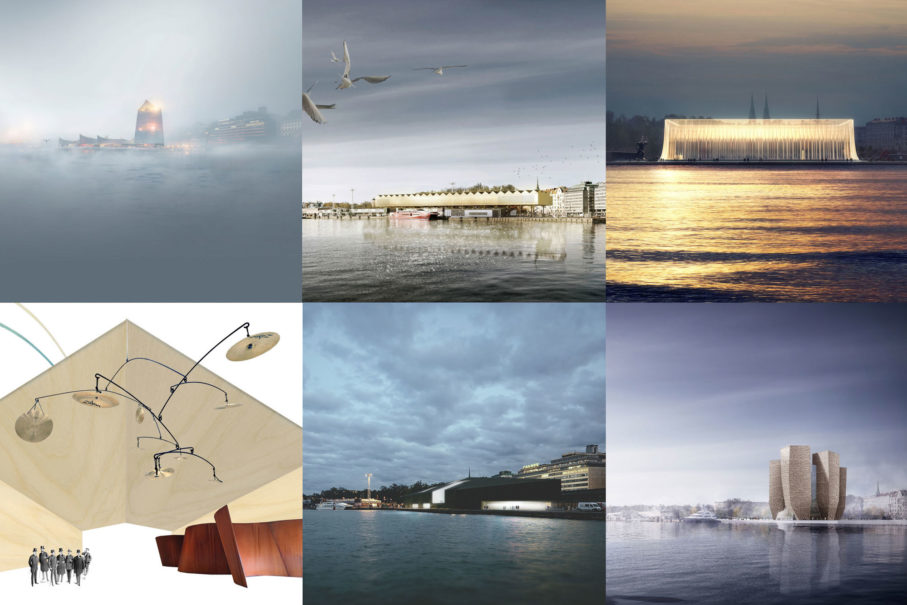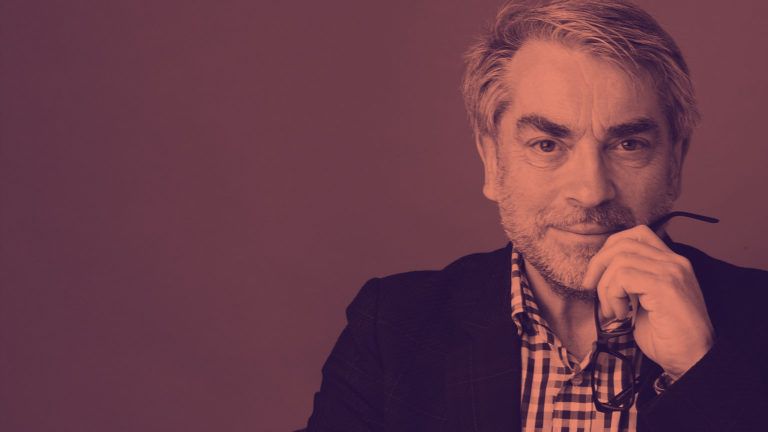
(HELSINKI, December 2, 2014)—The Solomon R. Guggenheim Foundation announced today that an independent, 11-member jury has unanimously selected six concept designs as finalists from the 1,715 anonymous submissions to the international architectural competition for a proposed Guggenheim museum in Helsinki, Finland. The shortlisted entries represent both emerging and established architectural practices in seven countries and offer fresh and distinctive approaches to museum design and to the changing role of the twenty-first-century museum.
Full details and descriptions of the six finalists are now available at designguggenheimhelsinki.org/finalists.
Richard Armstrong, Director of the Solomon R. Guggenheim Museum and Foundation, said:
‘As we saw from the unprecedented response to Stage One of the competition, this open, independent process has brought to Helsinki exciting, innovative design ideas from all over the world. The jury has chosen six deeply thoughtful design approaches, each of which opens extraordinary possibilities for a Guggenheim in Helsinki and asks us to imagine what a museum of the future can be. We are excited to see the finalists develop the potential of their visionary designs further, and we thank everyone who has contributed to this conversation so far—from the 1,715 competitors who created engaging and diverse submissions to the 200,000 people who have visited the competition website.’
The competition jury was selected by the Guggenheim, the State of Finland, the City of Helsinki, and the Finnish Association of Architects (SAFA). Mark Wigley, Professor and Dean Emeritus of the Graduate School of Architecture, Planning and Preservation of Columbia University, serves as chair. The other jury members are Mikko Aho, Director of City Planning and Architect, City of Helsinki; Jeanne Gang, Founder and Principal, Studio Gang Architects; Juan Herreros, Founder and Principal, Estudio Herreros; Anssi Lassila, Architect and Founder, OOPEAA Officefor Peripheral Architecture; Erkki Leppävuori, President and CEO, VTT Technical Research Centre of Finland; Rainer Mahlamäki, Professor and Founder, Lahdelma & Mahlamäki Architects; Helena Säteri, Director General, Ministry of the Environment, Finland; Nancy Spector, Deputy Director and Jennifer and David Stockman Chief Curator, Solomon R. Guggenheim Foundation; Yoshiharu Tsukamoto, Founder, Atelier Bow-Wow; and Ritva Viljanen, Deputy Mayor, City of Helsinki.
Wigley said:
‘Each of the finalists offers a distinctive and original way to create new public space for Helsinki, and each challenges the Guggenheim to develop unprecedented models of museum programming. Some designs make daring use of the existing Makasiini Terminal, or recall an aspect of the cultural memory of Helsinki. Some propose unforeseen mixtures of civic and museum space, or boldly juxtapose the spaces for more traditional exhibition making with new kinds of space for not-yet-imagined creations. All of the shortlisted designs are a compelling first step, and we eagerly look forward to seeing how they are more fully explored in the next stage of the competition.’
The official jury statement, available on the competition website, notes that:
‘The final shortlist encompasses a number of different scenarios: from schemes which are more experimental in engaging with the program and whose outward form will only emerge in the second phase, to ones that might seem more resolved from the outside but whose programmatic concept will only evolve fully in the second phase. The single theme, which linked the chosen six, and united the jury, was the impulse to expand the idea of what a museum can be. How can this new museum create a vital, meaningful, public, and intellectual presence within Helsinki? Which of these concepts will develop so that they bear comparison with the city’s architectural exemplars?’
Helsinki mayor Jussi Pajunen, said:
‘It has been a great honor for Helsinki to be the object of such an overwhelming global interest in terms of the architectural competition. Furthermore, the designs provide a good understanding of the vast potential that the South Harbor site holds. I am also excited about the lively discussion regarding the role of design and architecture in city development around the competition. Indeed, I would like to express my appreciation to the organizers and the jury for all the work that has been done to reach this phase and to identify the finalists.’
Finalist Teams
With the announcement of the jury’s selection, the names of the finalist teams have been released by independent competition manager Malcolm Reading Consultants. In alphabetical order,the finalist teams are:
- AGPS Architecture Ltd. (Zurich, Switzerland and Los Angeles, United States of America)
- Asif Khan Ltd. (London, United Kingdom)
- Fake Industries Architectural Agonism (New York, United States of America; Barcelona, Spain; and Sydney,Australia)
- Haas Cook Zemmrich STUDIO2050 (Stuttgart, Germany)
- Moreau Kusunoki Architect (Paris, France)
- SMAR Architecture Studio (Madrid, Spain and Western Australia)
In accordance with European Union procurement rules, the names of the competitors were not known to the jury, which identified all submissions only by a registration number. While the names of the six teams are now public, the designs have not been matched to the teams, nor will the jurors or public know which team is responsible for which design until the winner has been selected.

